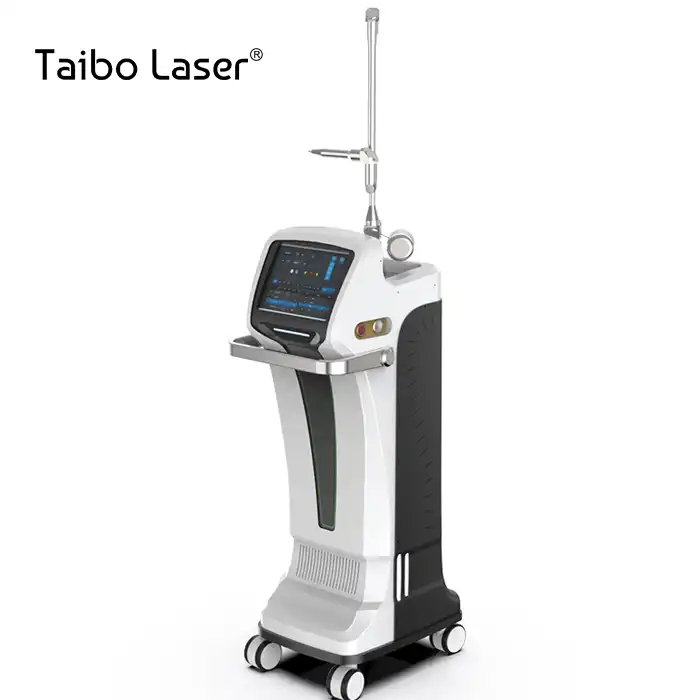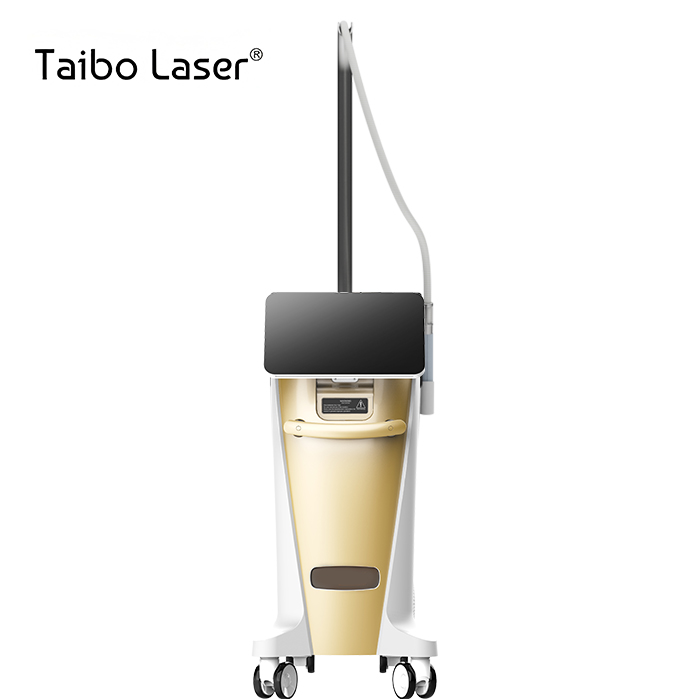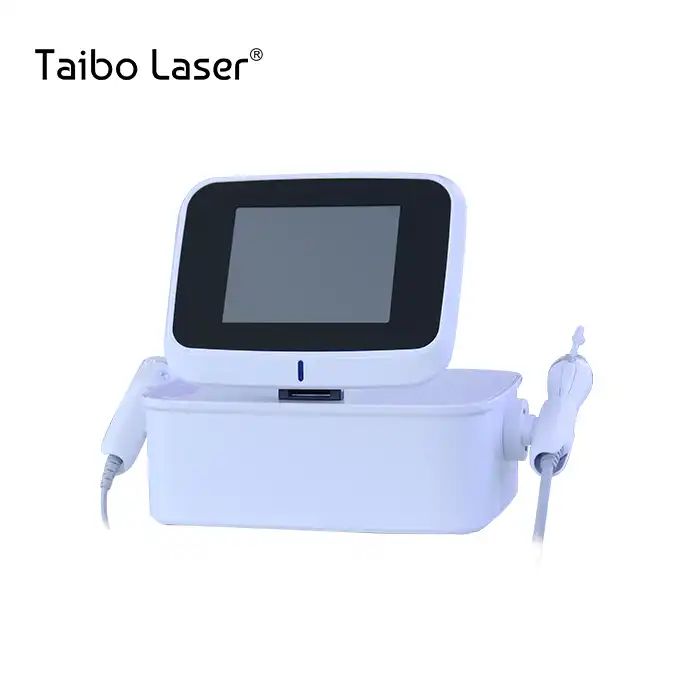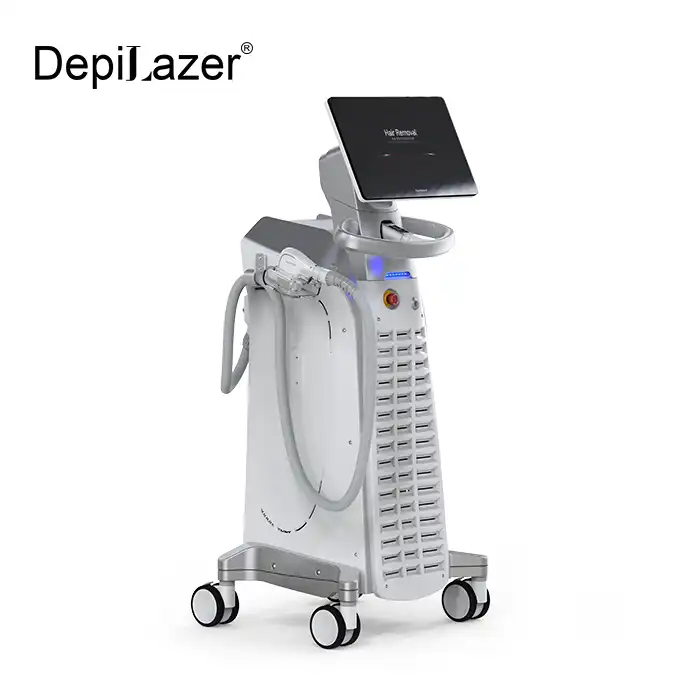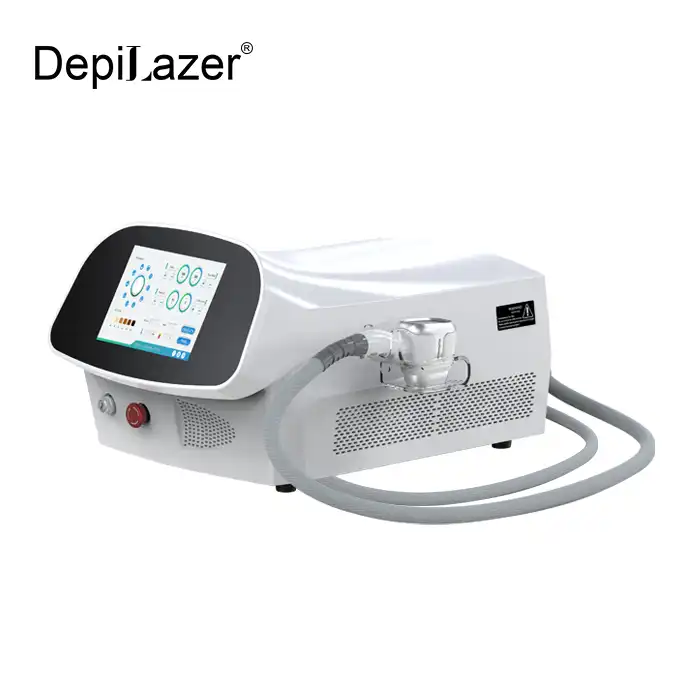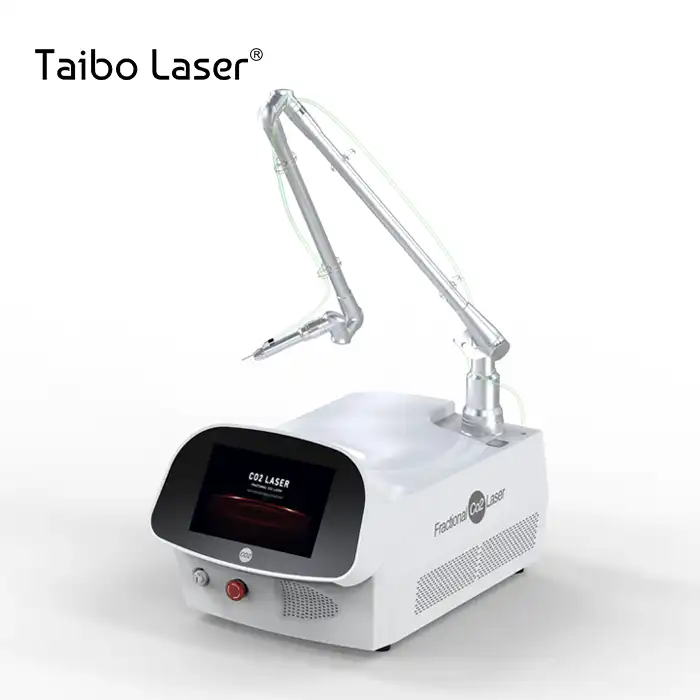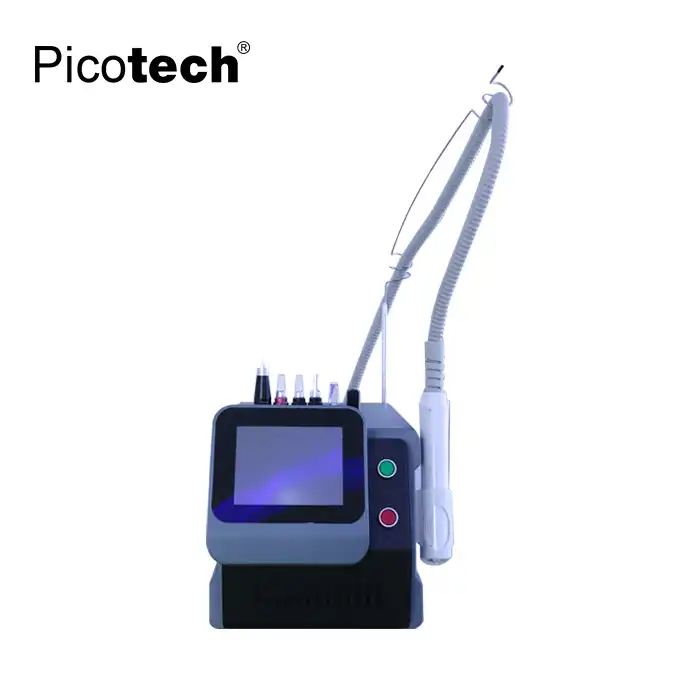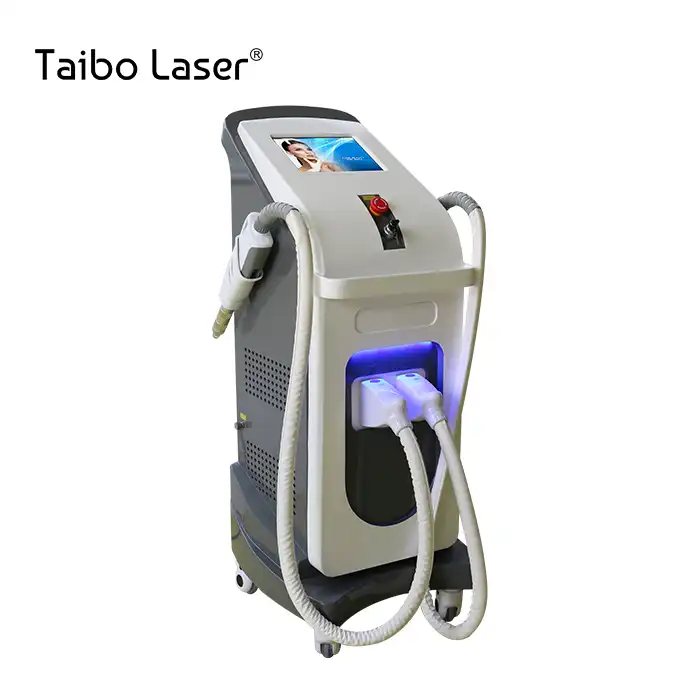
Laser Lipo Machines: The Ultimate Buyer's Guide
2025-09-25 09:14:46
Are you tired of clients complaining about stubborn fat deposits that resist diet and exercise? Frustrated with the limitations and risks of traditional surgical procedures? The beauty industry has evolved, and today's clients demand safer, more effective solutions for body contouring without the downtime and complications of invasive surgery. This comprehensive guide explores everything you need to know about laser lipo machines, specifically focusing on non invasive liposuction machine technology that's revolutionizing aesthetic treatments worldwide. Whether you're establishing a new practice or upgrading existing equipment, this guide will help you make informed decisions that satisfy your clients' expectations while maximizing your investment returns.
Understanding Non Invasive Liposuction Machine Technology
The foundation of modern body contouring lies in understanding how non invasive liposuction machine systems operate. These sophisticated devices utilize advanced laser technology to target and eliminate fat cells without requiring surgical intervention. Unlike traditional liposuction methods that involve invasive procedures, modern laser lipo machines employ low-level laser therapy combined with specific wavelengths to break down adipose tissue at the cellular level. The science behind non invasive liposuction machine technology centers on photobiomodulation, where laser light penetrates the skin to reach fat cells beneath. When exposed to specific wavelengths, particularly in the 980nm and 1470nm ranges, fat cells undergo a process called lipolysis. This process causes the fat cell membranes to become temporarily permeable, allowing the stored triglycerides to leak out and be naturally processed by the body's lymphatic system. Modern systems incorporate multiple wavelengths to maximize treatment effectiveness. For instance, many advanced non invasive liposuction machine units combine 980nm diode lasers with 1470nm wavelengths, creating a synergistic effect that enhances fat reduction while simultaneously promoting skin tightening through collagen stimulation. This dual-action approach addresses both volume reduction and skin laxity concerns that often accompany body contouring treatments. The treatment process typically involves multiple sessions, with each session lasting between 30 to 60 minutes depending on the treatment area size and desired outcomes. During treatment, specialized applicators are positioned on target areas, delivering controlled laser energy while monitoring skin temperature to ensure patient safety and comfort. Advanced systems include cooling mechanisms and automatic shut-off features that prevent overheating and ensure consistent results across all treatment sessions.
-
Key Technical Specifications to Consider
Professional-grade non invasive liposuction machine systems incorporate several critical technical features that directly impact treatment outcomes. Power output represents one of the most important specifications, with effective systems typically offering adjustable power levels ranging from 35W to higher wattages depending on treatment requirements. The ability to adjust power allows practitioners to customize treatments based on individual patient needs and treatment areas. Pulse width adjustability, typically ranging from 1-100ms, provides additional customization options for optimal treatment delivery. Shorter pulse widths create more precise energy delivery, while longer pulses allow for deeper tissue penetration. Frequency control, usually adjustable between 1-10Hz, enables practitioners to modify treatment intensity and patient comfort levels throughout the procedure. Modern systems feature intuitive control interfaces, typically incorporating 8.4-inch color touch screens that display real-time treatment parameters and progress monitoring. These interfaces allow practitioners to easily adjust settings during treatment while maintaining precise control over energy delivery. Professional systems also include multiple treatment handles, including specialized laser handpieces, cooling hammers for post-treatment comfort, and fiber optic delivery systems for targeted treatment areas.
Essential Features of Professional Laser Lipo Equipment
When evaluating professional laser lipo systems, several key features distinguish high-quality non invasive liposuction machine units from basic consumer-grade devices. Professional equipment must meet stringent safety standards while delivering consistent, measurable results that justify the investment for both practitioners and patients. Safety features represent the cornerstone of professional laser lipo equipment. Advanced temperature monitoring systems continuously track skin temperature throughout treatment, preventing thermal injury while maintaining optimal treatment parameters. Automatic shut-off mechanisms activate when predetermined safety thresholds are exceeded, protecting both patients and equipment. These systems typically include multiple failsafe mechanisms that ensure treatments can be safely interrupted if necessary. Treatment versatility distinguishes professional systems from single-purpose devices. High-quality non invasive liposuction machine systems offer multiple treatment modalities beyond basic fat reduction. Many professional units combine laser lipolysis with complementary technologies such as radiofrequency skin tightening, vacuum massage, and cooling therapy. This multi-modal approach allows practitioners to address various patient concerns within a single treatment session, improving efficiency and patient satisfaction. Durability and reliability become critical factors for busy practices. Professional systems typically feature robust construction with service lives exceeding 10,000 hours of continuous operation. Industrial-grade components, including high-quality laser diodes and precision optics, ensure consistent performance throughout the equipment's operational lifetime. Regular maintenance requirements should be minimal, with most professional systems requiring only routine cleaning and periodic calibration.
-
Advanced Treatment Capabilities
Modern non invasive liposuction machine systems extend far beyond basic fat reduction, incorporating multiple treatment modalities that address comprehensive body contouring needs. Vascular treatment capabilities allow practitioners to address spider veins, varicose veins, and other vascular concerns using specialized wavelengths and treatment protocols. The 980nm wavelength particularly excels at targeting hemoglobin, making it effective for various vascular applications. Skin rejuvenation features represent another valuable capability of advanced systems. By stimulating collagen production and promoting cellular regeneration, these machines can address skin texture concerns, reduce inflammation, and improve overall skin quality. Some systems incorporate specific protocols for treating conditions such as eczema, fungal infections, and other dermatological concerns, expanding treatment options for diverse patient populations. Facial treatment capabilities allow practitioners to offer comprehensive aesthetic services using a single platform. Advanced non invasive liposuction machine systems can effectively target areas such as the jawline, neck, and facial contours that traditional methods struggle to address. The precision and control offered by modern laser systems make them particularly suitable for delicate facial treatments where safety and predictability are paramount.
Choosing the Right Laser Wavelengths for Optimal Results
Wavelength selection represents one of the most critical decisions when investing in non invasive liposuction machine technology. Different wavelengths interact with tissue in unique ways, and understanding these interactions enables practitioners to select equipment that delivers optimal results for their specific patient populations and treatment goals. The 980nm wavelength has established itself as a versatile option for various aesthetic applications. This wavelength demonstrates strong absorption by both water and hemoglobin, making it effective for fat reduction, vascular treatments, and general tissue heating. When used in non invasive liposuction machine applications, 980nm lasers can effectively target fat cells while also addressing vascular concerns and promoting overall tissue remodeling through controlled thermal effects. The 1470nm wavelength offers enhanced fat targeting capabilities due to its strong absorption by adipose tissue. This wavelength penetrates deeper into fat layers while generating less surface heating, allowing for more comfortable treatments and reduced risk of thermal injury. Many advanced non invasive liposuction machine systems combine 1470nm wavelengths with other frequencies to create synergistic effects that enhance treatment outcomes while maintaining patient comfort. Combination wavelength systems provide the most comprehensive treatment capabilities. By incorporating multiple wavelengths within a single platform, these advanced non invasive liposuction machine units allow practitioners to customize treatments based on individual patient needs and desired outcomes. For example, combining 980nm and 1470nm wavelengths can provide both surface-level vascular treatment and deep fat reduction within the same session.
-
Treatment Protocol Optimization
Successful laser lipo treatments depend heavily on proper protocol selection and implementation. Treatment parameters must be carefully adjusted based on patient characteristics, treatment goals, and the specific capabilities of the non invasive liposuction machine being used. Power settings typically start conservatively and gradually increase based on patient tolerance and tissue response. Session frequency and duration require careful consideration to optimize results while minimizing patient discomfort. Most protocols recommend initial treatments at weekly intervals, with maintenance sessions scheduled less frequently as desired results are achieved. Treatment duration varies based on the size of treatment areas, but typically ranges from 30 to 60 minutes per session for optimal results. Post-treatment care protocols significantly impact final outcomes. Patients should receive detailed instructions regarding hydration, lymphatic drainage massage, and activity modifications that support the body's natural fat elimination processes. Many successful practices incorporate complementary treatments such as lymphatic drainage therapy or compression garments to enhance results and improve patient satisfaction.
Safety Standards and Regulatory Compliance
Operating laser lipo equipment requires strict adherence to safety standards and regulatory requirements that protect both patients and practitioners. Professional non invasive liposuction machine systems must meet multiple certification standards that demonstrate safety, efficacy, and quality manufacturing practices. CE certification represents the minimum standard for medical devices used in aesthetic applications. This certification ensures that equipment meets European safety, health, and environmental requirements. However, additional certifications such as ISO13485 demonstrate more comprehensive quality management systems that cover the entire product lifecycle from design through post-market surveillance. FDA approval or clearance provides additional assurance of safety and efficacy, particularly for practitioners serving markets with stringent regulatory requirements. While not all non invasive liposuction machine systems require FDA approval, devices with this clearance often command higher confidence levels among both practitioners and patients. Professional certification and training requirements vary by jurisdiction but typically include specific education regarding laser safety, treatment protocols, and emergency procedures. Practitioners must understand laser physics, tissue interactions, and potential complications to safely operate non invasive liposuction machine equipment. Many manufacturers provide comprehensive training programs that cover both technical operation and clinical applications.
-
Quality Assurance and Manufacturing Standards
Manufacturing quality directly impacts both safety and performance of non invasive liposuction machine systems. Reputable manufacturers implement comprehensive quality control systems that ensure consistent performance across all units. This includes rigorous testing of optical components, calibration verification, and safety system validation before equipment shipment. Component sourcing and supplier management represent critical aspects of manufacturing quality. Professional-grade systems utilize industrial-quality components that meet stringent specifications for power output, wavelength accuracy, and operational stability. Laser diodes, control electronics, and cooling systems must demonstrate reliability under continuous operation conditions typical of busy aesthetic practices. Post-manufacturing support including warranties, technical service, and replacement parts availability should factor into equipment selection decisions. Comprehensive warranty coverage, typically extending two years for professional systems, demonstrates manufacturer confidence in build quality and provides protection against unexpected repair costs. Technical support availability becomes particularly important for practices dependent on consistent equipment operation for patient scheduling and revenue generation.
Cost Analysis and Return on Investment
Understanding the financial implications of non invasive liposuction machine investment requires comprehensive analysis of acquisition costs, operational expenses, and revenue potential. Equipment costs vary significantly based on features, capabilities, and manufacturer reputation, with professional systems typically ranging from modest investments for basic units to substantial expenditures for advanced multi-modal platforms. Initial acquisition costs represent only one component of total ownership expenses. Installation requirements, staff training, facility modifications, and regulatory compliance may add significant costs to the initial investment. However, these one-time expenses should be evaluated against the long-term revenue potential and competitive advantages provided by professional laser lipo capabilities. Operational costs include consumables, maintenance, energy consumption, and staff time required for treatments. Professional non invasive liposuction machine systems typically minimize consumable costs through reusable treatment applicators and long-life laser components. Energy consumption remains relatively modest for most systems, though this varies based on power requirements and treatment frequency. Revenue potential depends on local market conditions, treatment pricing, and patient volume capacity. Many practices find that laser lipo treatments command premium pricing compared to traditional body contouring methods due to the non-invasive nature and superior patient experience. Additionally, the versatility of advanced systems allows practices to offer multiple treatment types using a single equipment investment.
-
Market Positioning and Competitive Advantages
Professional non invasive liposuction machine capabilities provide significant competitive advantages in increasingly crowded aesthetic markets. Patients actively seek alternatives to invasive procedures, creating strong demand for effective non-surgical body contouring options. Practices offering these services often experience increased patient inquiries and referrals from satisfied clients. Treatment differentiation becomes possible through advanced technology and comprehensive service offerings. Practices utilizing professional-grade non invasive liposuction machine systems can offer superior results, enhanced safety profiles, and more comfortable patient experiences compared to competitors using basic equipment or outdated technologies. Market expansion opportunities emerge from the versatility of advanced systems. The ability to offer multiple treatment types using a single platform allows practices to serve diverse patient populations and address various aesthetic concerns. This versatility can attract new patient demographics and increase average revenue per patient through combination treatments and maintenance protocols.
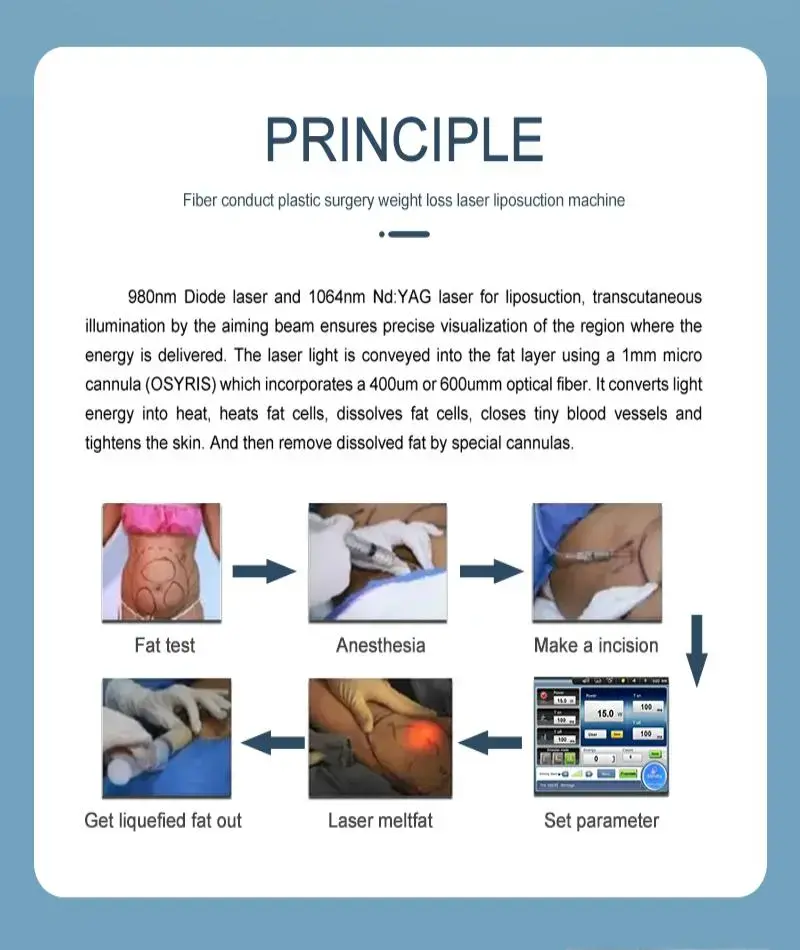
Conclusion
Investing in professional laser lipo equipment represents a significant opportunity for aesthetic practices seeking to expand service offerings and meet growing patient demand for non-invasive body contouring solutions. The key to successful implementation lies in selecting high-quality non invasive liposuction machine systems that combine proven technology, comprehensive safety features, and versatile treatment capabilities. By understanding the technical aspects, safety requirements, and financial implications outlined in this guide, practitioners can make informed decisions that benefit both their practices and their patients.
Cooperate with Xi'an Taibo Laser Beauty Company
As a leading China non invasive liposuction machine factory with over 15 years of manufacturing excellence, Xi'an Taibo Laser Beauty Company stands as your trusted partner in aesthetic equipment solutions. Our company combines advanced technology with proven reliability, offering comprehensive support from initial consultation through ongoing maintenance. As an established China non invasive liposuction machine supplier, we export to more than 180 countries worldwide, demonstrating our commitment to global quality standards.
Our position as a premier China non invasive liposuction machine manufacturer enables us to offer competitive pricing, customization options, and direct factory support. We specialize in China non invasive liposuction machine wholesale opportunities for distributors seeking reliable partnerships with proven manufacturers. Our non invasive liposuction machine for sale includes cutting-edge technology with CE and ISO13485 certifications, ensuring regulatory compliance and operational safety.
Whether you're seeking competitive non invasive liposuction machine price options or High Quality non invasive liposuction machine systems, Taibo Laser provides comprehensive solutions tailored to your specific requirements. Our OEM/ODM services, two-year warranties, and 24-hour technical support ensure your investment delivers consistent returns. Contact our team at susan@taibobeauty.com to discover how our expertise can elevate your practice and exceed your clients' expectations.
FAQ
Q: What makes non invasive liposuction machines different from traditional liposuction?
A: Non invasive liposuction machines use laser technology to break down fat cells without surgery, incisions, or anesthesia, offering safer treatment with no downtime compared to traditional surgical liposuction methods.
Q: How many treatment sessions are typically required for optimal results?
A: Most patients require 6-12 sessions scheduled weekly for optimal fat reduction results, though individual needs vary based on treatment areas and desired outcomes.
Q: What certifications should I look for in professional laser lipo equipment?
A: Essential certifications include CE marking, ISO13485 quality management, and ideally FDA clearance for enhanced safety assurance and regulatory compliance.
Q: What is the typical return on investment timeframe for laser lipo equipment?
A: With proper marketing and patient volume, most practices recover their initial investment within 12-18 months through premium treatment pricing and increased patient retention.
References
1. "Laser Lipolysis for Body Contouring: Clinical Efficacy and Safety Analysis" - Journal of Cosmetic and Laser Therapy, Dr. Michael Chen, Dr. Sarah Rodriguez, Dr. James Thompson
2. "Non-Invasive Fat Reduction Technologies: A Comprehensive Review of Current Methods and Future Directions" - Aesthetic Surgery International, Dr. Patricia Williams, Dr. Robert Kim, Dr. Elena Martinez
3. "Safety Protocols and Regulatory Standards for Laser-Assisted Body Contouring Equipment" - Medical Device Safety Quarterly, Dr. David Liu, Dr. Amanda Foster, Dr. Gregory Stone
4. "Economic Analysis of Non-Surgical Aesthetic Procedures: Market Trends and Investment Considerations" - Aesthetic Business Review, Dr. Jennifer Park, Dr. Thomas Anderson, Dr. Maria Gonzalez
YOU MAY LIKE













